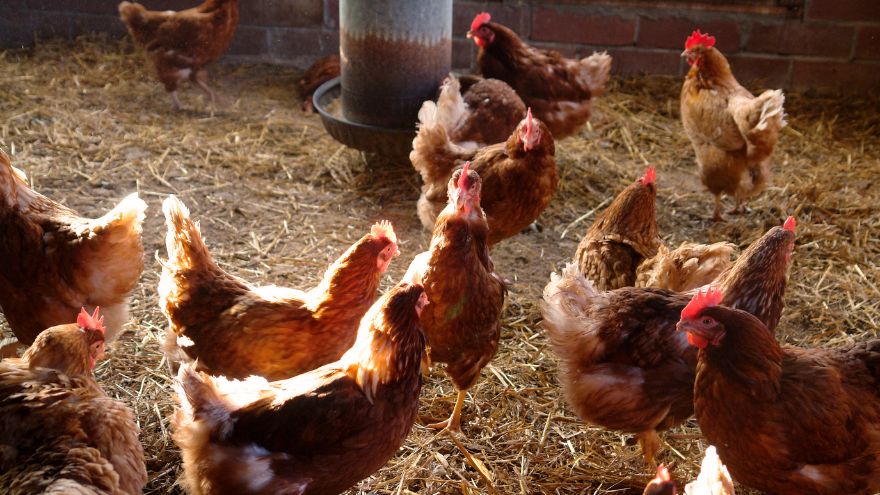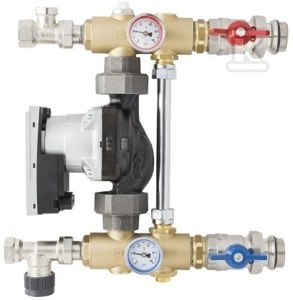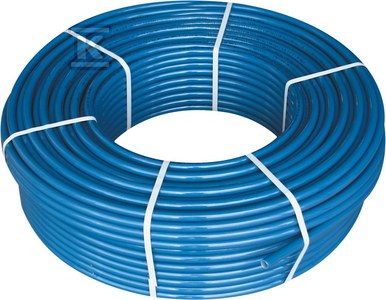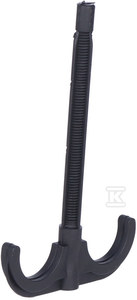Improper temperature in the hen house can lead to various health problems and even death of animals. Therefore, ensuring an optimal atmosphere is not only a matter of bird welfare, but also an economic aspect. Here's why it's worth ensuring the right temperature in the hen house and how to achieve it.

Check out KAN-therm underfloor heating at the Onninen wholesaler
Why is it worth ensuring the right temperature in the hen house?
For both poultry farmers and the birds themselves, the right temperature in the hen house is crucial. Here are some reasons why it is worth investing in effective heating systems:
- Feed saving : Optimal
 breeding temperature means measurable savings in animal feed with high fattening results. Birds don't have to burn extra calories to stay warm, which means they use more of the energy from their feed to grow.
breeding temperature means measurable savings in animal feed with high fattening results. Birds don't have to burn extra calories to stay warm, which means they use more of the energy from their feed to grow. - Reducing humidity : Minimized substrate humidity saves costs associated with frequent replacement of natural litter. Less moisture means less mold and bacteria, which translates into healthier birds and less work for breeders and savings on medicines .
- Reduction of harmful gases : Low levels of harmful fermentation gases improve the air quality in the poultry house, which benefits both birds and workers.
- Reducing the risk of diseases : An optimal microclimate in livestock buildings reduces the incidence of diseases among animals. Healthy birds mean higher productivity and lower losses.
Temperature is one of the most important factors affecting the well-being of poultry. Proper thermal conditions are essential for animal health and productivity. Temperatures that are too low or too high can lead to thermal stress, which negatively affects the health and productivity of poultry.
What is the optimal temperature for poultry?
The optimal temperature for poultry depends on the age and species of the animals. For example, for broiler chickens in the first week of life, the optimal temperature is 33-35°C, and then it is gradually lowered by 2-3°C per week, until a temperature of 20-22°C is reached in the 5th week of life. For laying hens, the optimal temperature is 18-22°C.
Temperature regulation in poultry farming?
 Temperature regulation in poultry farming is crucial to maintaining optimal conditions for the animals. Various methods are used for this purpose, such as heating, ventilation and thermal insulation of buildings. Heating is especially important for young animals that are not yet able to regulate their body temperature on their own. Ventilation helps maintain the appropriate temperature and humidity of the environment, and also provides access to fresh air. Building insulation helps maintain a constant temperature, regardless of external conditions.
Temperature regulation in poultry farming is crucial to maintaining optimal conditions for the animals. Various methods are used for this purpose, such as heating, ventilation and thermal insulation of buildings. Heating is especially important for young animals that are not yet able to regulate their body temperature on their own. Ventilation helps maintain the appropriate temperature and humidity of the environment, and also provides access to fresh air. Building insulation helps maintain a constant temperature, regardless of external conditions.
Consequences of incorrect temperature in the hen house
Improper temperature can lead to many health problems in poultry, such as hypothermia or hyperthermia. These may result in decreases in production efficiency, diseases and even death of animals. That is why it is so important to monitor and regulate temperature in poultry farming.
Hen house heating systems
There are many different systems for heating a chicken coop, but one of the most effective and energy-saving is underfloor heating . It allows for even distribution of heat over the entire floor surface, ensuring a constant temperature throughout the building. Its installation involves placing a system of pipes carrying the heating medium on an insulated surface under the floor.
Underfloor heating of the hen house with KAN Agro products
When it comes to underfloor heating, KAN-therm is one of the market leaders. Their systems are reliable, energy-efficient and meet all national and EU standards. Here are some reasons why it is worth choosing KAN-therm underfloor heating :
- High standards of production and quality control.
- Failure-free operation of the installation :
 KAN-therm systems are designed to be easy to use. This minimizes the risk of failure. This means less stress for farmers and less downtime in production.
KAN-therm systems are designed to be easy to use. This minimizes the risk of failure. This means less stress for farmers and less downtime in production. - Professional technical advice : KAN-therm offers full-service support to help growers choose the best system for their needs and ensure it is properly installed and maintained.
- Energy efficiency : KAN-therm underfloor heating systems are extremely energy efficient, which means lower energy bills and a lower impact on the environment.
- Applications in practice : KAN-therm has achieved many successful projects, including heating a hen house with an area of 2,500 m 2 in Brzozów Wielki, where an underfloor heating installation based on KAN-therm PE-RT heating pipes was used. The system ensures an optimal floor temperature for chickens in the first breeding cycle of 33-35 °C.
Check out KAN-therm underfloor heating at the Onninen wholesaler